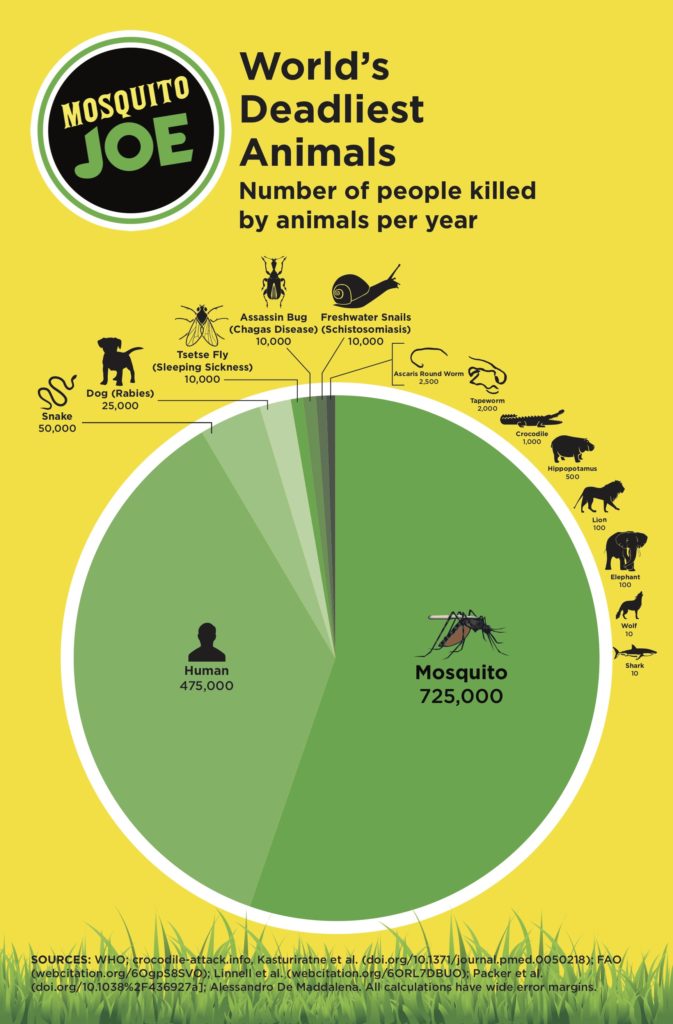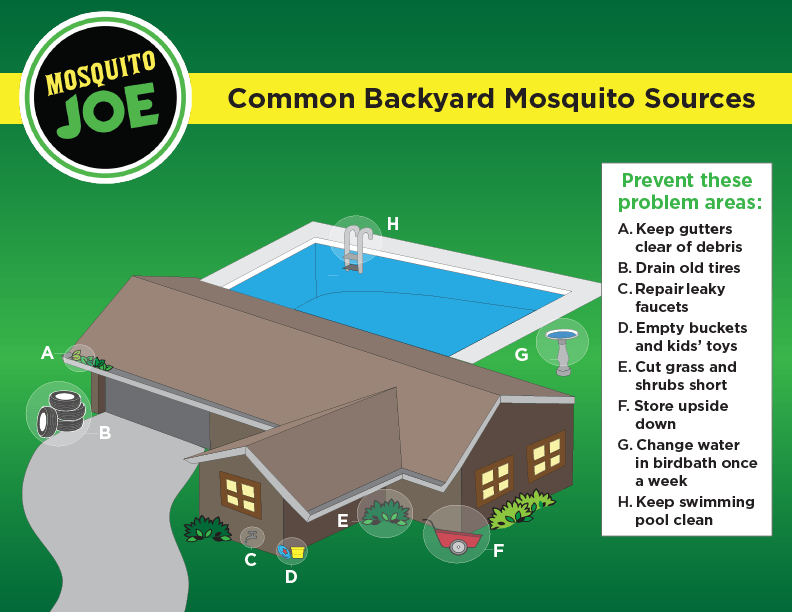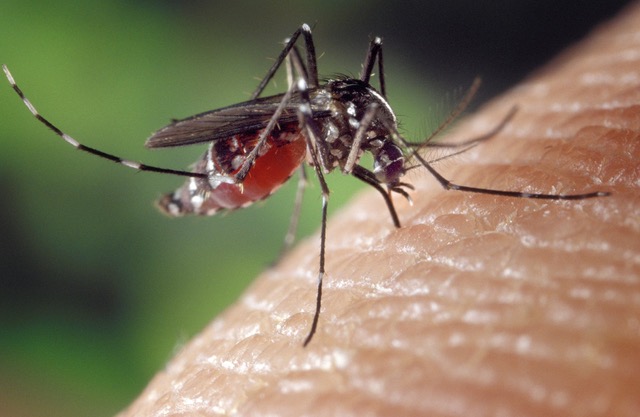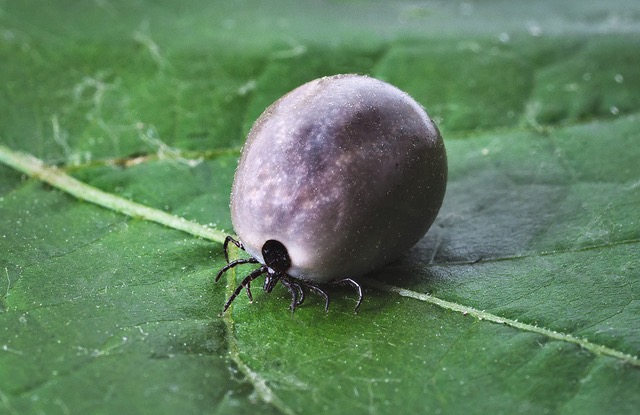How to Prevent Mosquito and Tick Diseases
Different Types of Mosquito Diseases

Zika
Zika hit the news a couple of years ago here in the States, but it has been around much longer than that. It was discovered in 1947 with the first human case in 1952. Before 2007 at least 14 cases were documented, but it is possible that many more were missed.
Zika is spread via the Aedes egypti and albopicus mosquitoes, two species that like to bite during the day. The virus is sexually transmitted and can be spread to an unborn fetus if pregnant. It is thought (though not yet proven) to be transmitted through blood. There is currently no vaccine or medication available for Zika. Symptoms of Zika include fever, rash, headache, joint and muscle pain plus reddening of the eyes. Often these symptoms can be mistaken for the flu although Zika can be confirmed via a blood or urine test. Zika can result in microcephaly, miscarriage, still-birth, and Guillain-Barre.
West Nile
West Nile is spread from mosquitoes who have become infected by feeding on infected birds. In a small number of cases, it has been spread through blood transfusions and during pregnancy or breastfeeding. It is NOT spread through handling live or dead infected birds (although the CDC recommends using gloves to handle any dead or injured bird). Most people have no symptoms, while 1 in 5 suffers from fever, headaches, joint and body aches, diarrhea or rash. The symptoms of fatigue and weakness can last for months. About 1 in 150 people will suffer from serious symptoms that affect the central nervous system, including encephalitis or meningitis. Symptoms include high fever, neck stiffness, coma, tremors, vision loss and paralysis. Recovery from West Nile can take many months. About 1 in 10 people who acquire CNS symptoms will die. West Nile can be confirmed with a test from the doctor.
 Chikungunya
Chikungunya
Prior to 2013, outbreaks of Chikungunya were identified in Africa, Asia and Europe. In later 2013 the first transmission in the Americas was identified in Caribbean countries. The virus then spread and has now been seen throughout the US.
Chikungunya is transmitted via a bite from an already infected mosquito. It is most often spread via the Aedes aegypti and albopictus mosquitoes, who bite during the day and night. It is rarely transmitted from mother to child and never via breastfeeding. 3-7 days after a bite from an infected mosquito, the patient will develop symptoms of fever and joint pain. These may be accompanied by a headache, muscle pain or joint swelling. Most patients feel better within a week, while younger or elderly patients may suffer from joint pain for months, and in some cases, the symptoms can be severe and disabling. Death is not as common but is possible. There is no vaccine or medication to treat the Chikungunya virus, which can be detected through testing. It is important, once diagnosed, to remain inside and prevent the possibility of mosquito bites (which would allow the virus to be spread to others).
Dengue Fever
Dengue fever is a leading cause of illness and death in the tropics and sub-tropics with as many as 400 million people infected annually. WHO estimates that there are 22,000 deaths per year resulting from Dengue. The four dengue viruses originated in monkeys and jumped to humans 100-800 years ago. Dengue has been a worldwide problem since the 1950’s, particularly in Latin America, SE Asia and the Pacific. It is also endemic in Puerto Rico, while rare in the continental US. Aedes aegypti and albopictus are again the vectors, and once they bite an infected person they carry the infection for life, transmitting it to other humans as they bite. Symptoms typically begin 4-7 days after a bite and, in most cases, last 3-10 days. Dengue can be transmitted through blood transfusions and from mother to fetus, but these situations are rare.
Symptoms of Dengue include high fever, accompanied by at least two of these: a severe headache, severe eye pain, joint and muscle pain, rash, bleeding and low white blood cell count. If a patient’s fever drops and they then develop persistent vomiting, rashes, difficulty breathing or a host of additional symptoms, it is vital that they seek medical attention. While there is no specific treatment from Dengue, fluid replacement in a hospital can assist in treating the symptoms.
Malaria
In 2016 an estimated 445,000 people die of malaria, most deaths were young children in sub-Saharan Africa. Most vulnerable are children and pregnant women whose immunity has been lowered due to pregnancy. While Malaria is not currently an issue in the US, traveling to warmer regions near the equator (Africa and Papua New Guinea, for example) will be cause for great caution. You can visit the CDC traveler’s guide for a list of countries where Malaria is a concern. Malaria is transmitted by the Anopheles mosquito and is transmitted by mosquito bites from an infected person to another. Because the malaria parasite is found in red blood cells, transmission can also occur from sharing of needles, pregnancy or blood transfusions. Symptoms usually appear in 7-30 days but can take up to a full year to develop. These include high fevers, shaking chills and flu-like symptoms. Nausea, vomiting and diarrhea can also occur along with anemia and jaundice. Without treatment, Malaria can result in severe illness including kidney failure, seizures, coma, even death.
Different Types of Tick Diseases
 Lyme Disease
Lyme Disease
Lyme disease is caused by the bacterium Borrelia burgdorferi and is transmitted from the bite of the black-legged tick. These ticks are found in the NE, mid-Atlantic, north-central and pacific US. There are also cases around the Houston area each year. Most humans are infected through the bite of an immature tick, otherwise known as a nymph. These are tiny (2mm or less) and are difficult to see. Although dogs and cats can get Lyme disease, there is no evidence they can spread the disease to their owners, nor can a person spread it to another. Lyme disease acquired during pregnancy can lead to infection of the placenta and still-birth. However, if the mother received appropriate antibiotic treatment there will be no negative impact on the fetus.
3-30 days after a bite, symptoms develop and can include a headache, chills, fever, joint aches and swollen lymph nodes. About 70-80% of infected people will have a rash that begins at the site of the bite and spreads over time to about a foot or more across. Days to months later arthritis, facial palsy, intermittent pain in muscles and joints, heart palpitations, nerve pain and numbness can occur. Lab blood tests can confirm the presence of Lyme disease and antibiotic treatments early can mean a rapid and complete recovery. If treatment is delayed the patient can suffer from chronic Lyme disease.
Rocky Mountain Spotted Fever
Rocky Mountain Spotted Fever (henceforth referred to as RMSF) is a serious and potentially deadly tickborne illness spread by several species of ticks in the US, including the American Dog Tick, Rocky Mountain wood tick, and the brown dog tick. RMSF cases occur throughout the US, although they are most common in NC, TN, MS, AR and OK. Initially, signs and symptoms can include fever, headache, rash, nausea and vomiting, stomach and muscle pain and lack of appetite. A rash is a very common sign with RMSF usually developing 2-4 days after a bite. RMSF does not result in chronic or persistent infections although some who recover from severe RMSF can be left with permanent damage including amputation, hearing loss, paralysis or mental disability. Blood tests can confirm the illness although the results can take weeks to receive. Early treatment with antibiotics can prevent severe illness and death.
Prevention
Prevention of both mosquito and tick bites falls into two categories: protecting yourself and preventing issues in your yard.

Download our Tick Prevention & Education flyer to learn more about tick control and how you can reduce your family’s exposure and the health risks that these pesky bugs carry.
If the mosquitoes and ticks in your yard have you feeling a little overwhelmed, the experts at Mosquito Joe of NW Houston & Brazos Valley can help! Our technicians will provide mosquito and tick repellent sprays for your yard which can prevent bites for up to 21 days. Give us a call and we’ll be happy to chat more about what our mosquito eliminating sprays can do for you so you can get back to enjoying the sunshine.



 Chikungunya
Chikungunya Lyme Disease
Lyme Disease